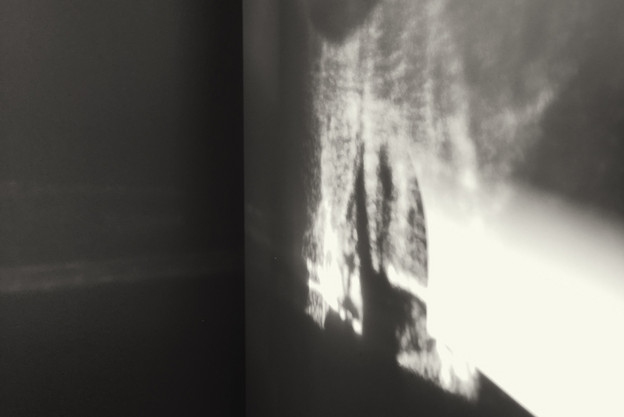Refraction as rupture

In investigating the significance and stake in refractive poetics, especially for artists who come from the margins, it is necessary first to ask what is meant specifically by the term refraction: How am I defining refractive poetries? What is it that holds my attention here?
In post 1 of this series, I describe how poets and artists, in renaming the world anew, engage in acts of “translation” that are intentionally askew. As mentioned, I am thinking of artists who translate a concept, experience, or form, moving from an exterior location to an interior one. Drawing loosely on scientific and colloquial notions of refraction, I consider a poetics of refraction to include:
- A base-line that is being interrupted/modulated/dispersed;
- Where “base-line” is the normative, the status quo, an expectation of continuity;
- And in between the base-line and the line(s)-of-refraction, something opens up, is transformed, that is, new layers of meaning are made in a liminal space of displacement.
Refractive poetries thus depend on both something “familiar” and something “unfamiliar,” structural cohesion and then wilderness, the assumption of linearity that is uprooted into non-linearity. The hinge that connects and blurs each of these oppositions is the occurrence and quality of rupture.
Hermeneutics philosopher Paul Ricoeur describes how metaphor—itself a mechanism of refraction—does not convey meaning merely by mirroring or substituting, but rather it actually creates new meaning, across a distance, in the rupture it opens up semantically. It is “an indirect reference built on the ruins of the direct reference.”
In some ways, this architecture bears on the operations of language and art in general; we are always in the presence of ghosts, traces, shadows, echoes. Indeed, if all language and modes of reference are in some way metaphorical, with gaps and chasms, ambiguities and tension, a tenable relationship between signifier and signified, then it is inside that wild and slippery space where so much poetry and art reside.
In the works of art that I will be considering, the idea of meaning in relation to rupture and ruins might be even more salient. There is destruction: in the creation of new meaning, the old paths of meaning must be destabilized. The implication, though, is not that the old references cease to exist at all but that their ruins saturate the air like dust unsettling or particles of fog. Within that haze and cloud, something new and transgressive is created. What ghosts, echoes, shadows emerge between the ruins to hover and suspend in refractive poetries? How do they illuminate truths as they slip between cracks and gaps? What is ineffable in the space that rupture opens up?
* * *
Notes:
Paul Ricoeur, "The Metaphorical Process as Cognition, Imagination, and Feeling," Critical Inquiry 5 (1978).
Other ways of seeing: The poetics and politics of refraction